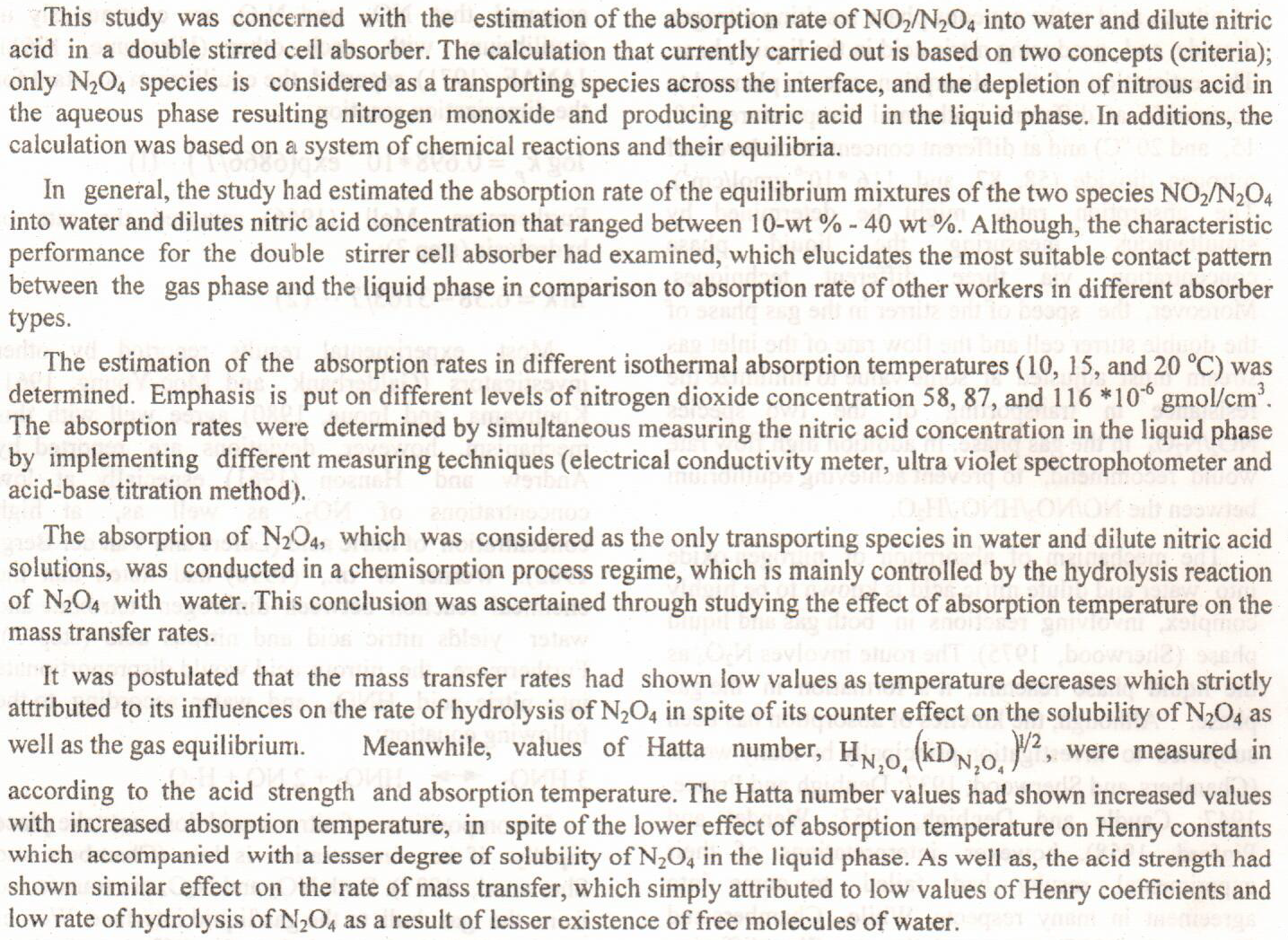
Background: The longevity of any prosthesis depends on the materials from which it was fabricated, that is why, defects in the material properties may reduce the service life of prosthesis and necessitate its replacement. The aim of this study was to evaluate the effect of adding different concentrations of Polyamide-6 (Nylon-6) on the tear and tensile strength of A-2186 RTV silicone elastomer. Materials and Methods: 80 samples were fabricated by the addition of 0%, 1%, 3% and 5% by weight PA-6 micro-particles powder to A-2186 platinum RTV silicone elastomer. The study samples were divided into four (4) groups, each group containing 20 samples. One control group was prepared without PA-6 micro particles and three experimental groups were pr
... Show More (10)
(10)
This study concerns the removal of a trihydrate antibiotic (Amoxicillin) from synthetically contaminated water by adsorption on modified bentonite. The bentonite was modified using hexadecyl trimethyl ammonium bromide (HTAB), which turned it from a hydrophilic to a hydrophobic material. The effects of different parameters were studied in batch experiments. These parameters were contact time, solution pH, agitation speed, initial concentration (C0) of the contaminant, and adsorbent dosage. Maximum removal of amoxicillin (93 %) was achieved at contact time = 240 min, pH = 10, agitation speed = 200 rpm, initial concentration = 30 ppm, and adsorbent dosage = 3 g bentonite per 1L of pollutant solution. The characterization of the adsorbent, modi
... Show More (22)
(22)
 (25)
(25)
The fatty acid composition in the seed and flower of Ligustrun lucidum and olive oil was studied by Gas Chromatography. Results showed that the main components of seed oil were Palmitic (C16:0) 5,893% ,Palmitolic acid (C16:1)0,398%, Steaeic (C18:0)2,911% ,Oleic (C18:1)74,984%,Linoleic (C18:2) 12,959%,and Linolenic (C18:3) 0,997%. The proportion of unsaturated fatty acid was above 89,338%, so the seed oil of L. lucidum ait belonged to unsaturated oil which possessed promising application. The components of flower oil were Palmitic (C16:0) 65,674% ,Palmitolic acid (C16:1)6,516%, Steaeic (C18:0)2,641% ,Oleic (C18:1)14,707%,Linoleic (C18:2) 3,113%,and Linolenic (C18:3) 2,70%. The proportion of unsaturated fatty acid and saturated fatty acid wa
... Show MoreBackground: human paillomavirus infections (genital warts) are the most frequent sexually transmitted viral infections. a wide range of treatment options is available with different efficacy.
Objective: To evaluate the efficacy of podophyllin, trichloracetic acid (TCA) in the treatment of genital warts and side effects of them.
Subjects and methods: a total of sixty patients with genital warts were randomly selected, 30 in each group, in the Department of Dermatology, medical city for a Duration of 11 months from January 2009 to December 2009 treated with 35 % podophyllin in the tincture of benzoin or 50% TCA) .Forty-eight patients were followed up for three months.
Results: wart
... Show MoreThis article discusses some linguistic problems that arise when translating the Holy Quran from Arabic to Russian. We analyze lexical, syntactic and semantic problems and support them with Examples of verses from the Qur'an, since the Qur'an is the word of Allah. It contains prayers and instructions full of both literal representations and figurative comparisons. The identification of linguistic and rhetorical features challenges translators of the Holy Qur'an, especially when translating such literary devices as metaphor, assonance, epithet, irony, repetition, polysemy, metonymy, comparisons, synonymy and homonymy. The article analyzes: metaphor, metonymy, ellipsis, polysemy.
 (4)
(4)
Investigating the thermal and electrical gains and efficiencies influence the designed photovoltaic thermal hybrid collector (PVT) under different weather conditions. The designed system was manufactured by attaching a fabricated cooling system made of serpentine tubes to a single PV panel and connecting it to an automatic controlling system for measuring, monitoring, and simultaneously collecting the required data. A removable glass cover had been used to study the effects of glazed and unglazed PVT panel situations. The research was conducted in February (winter) and July (summer), and March for daily solar radiation effects on efficiencies. The results indicated that electrical and thermal gains increased by the incre
... Show More (8)
(8)
Kinetic and mechanism studies of the oxidation of oxalic acid by Cerium sulphate have been carried out in acid medium sulphuric acid. The uv- vis. Spectrophotometric technique was used to follow up the reaction and the selected wavelength to be followed was 320 nm. The kinetic study showed that the order of reaction is first order in Ce(IV) and fractional in oxalic acid. The effect of using different concentration of sulphuric acid on the rate of the reaction has been studied a and it was found that the rate decreased with increasing the acid concentration. Classical organic tests was used to identify the product of the oxidation reaction, the product was just bubbles of CO2.
Kinetic and mechanism studies of the oxidation of oxalic acid by Cerium sulphate have been carried out in acid medium sulphuric acid. The uv- vis. Spectrophotometric technique was used to follow up the reaction and the selected wavelength to be followed was 320 nm. The kinetic study showed that the order of reaction is first order in Ce(IV) and fractional in oxalic acid. The effect of using different concentration of sulphuric acid on the rate of the reaction has been studied a and it was found that the rate decreased with increasing the acid concentration. Classical organic tests was used to identify the product of the oxidation reaction, the product was just bubbles of CO2.
